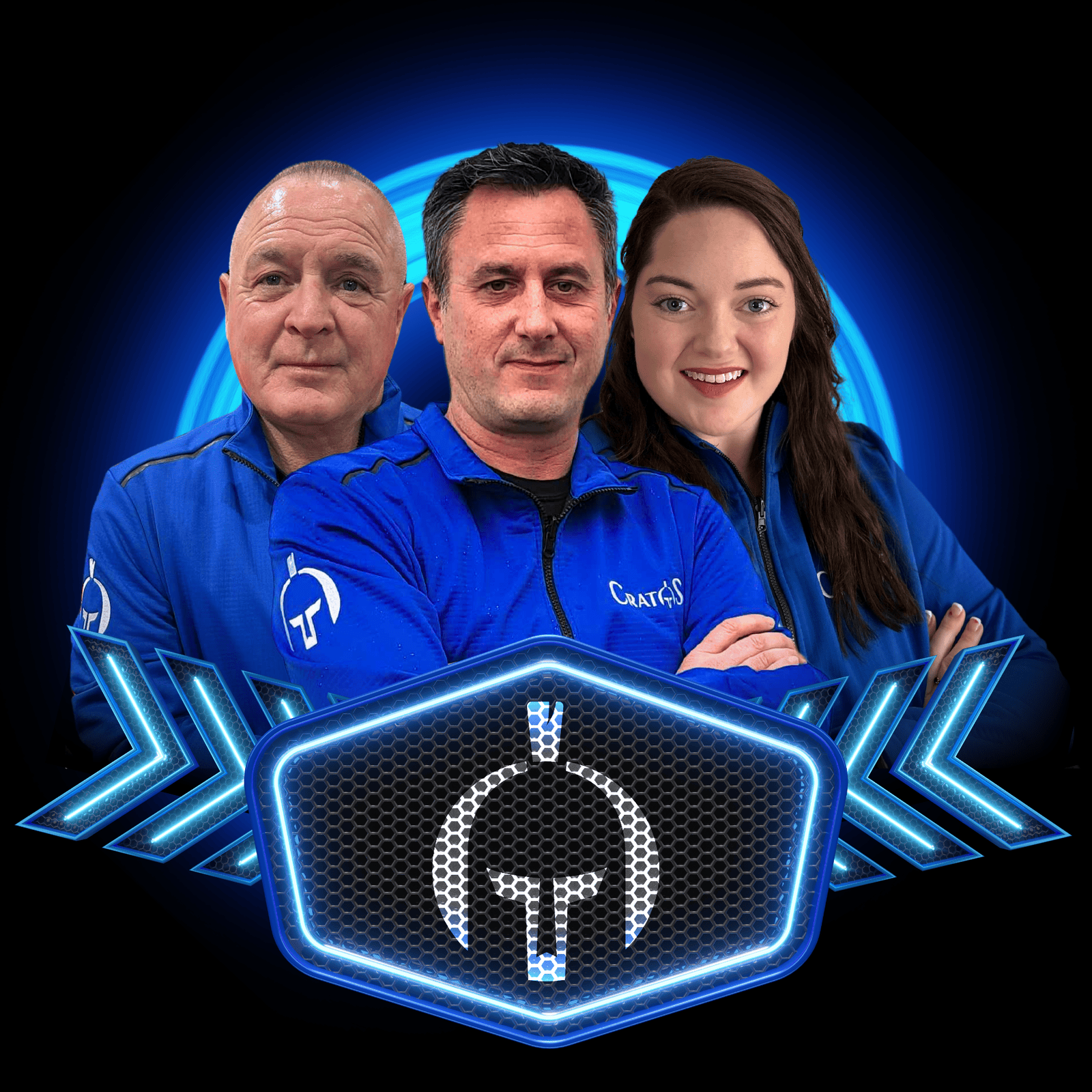Cratos Equipment Leads Panel of Experts on Jobsite Safety with Electric Construction Equipment
On June 8 at 1:00 pm, Cratos Equipment held a webinar with a panelist of leading experts hosted and moderated by Alex Berg, CEO, and founder of Cratos Equipment. Joining Alex was Ignacy Puszkiewicz discussing the technology supporting job site safety from an access equipment perspective.
Ignacy Puszkiewicz works for JLG Industries, Inc. that constitutes the Access Segment of Oshkosh Corporation. Mr. Puszkiewicz is the Senior Director responsible for researching future technologies applicable to JLG products and Industrial Design across all product platforms. Mr. Puszkiewicz has 38 years of experience in research and development of mobile, off-highway equipment and vehicles, with 25 designing products for JLG. In addition, Mr. Puszkiewicz has authored several articles and is an inventor with a portfolio of 20+ granted patents. Mr. Puszkiewicz received his master's degree in mechanical engineering from Lublin Technical University in Poland.
2 Exciting Facts About Access to Equipment
- Access equipment was born from a need to make construction job sites safer and allow construction workers safe access to heights and remote access areas.
- Interestingly, access equipment isn't always categorized as construction equipment, even though they are present at most job sites and help execute construction projects.
New ANSI 92.20 Standards
The standards which govern work platforms are constantly changing; therefore, JLG works diligently to change their approach and enhance their machines to meet these new requirements.
Mobile-elevated work platforms (MEWPs) are divided into two groups:
- Group A- MEWPs with platforms that move vertically but stay inside the tipping lines
- Group B- All other MEWPs, typically boom-type MEWPs where the platform extends past the machine's chassis (telehandler)
Under these groups, they are then further classified into types.
- Type 1- Can only be driven in the stowed position
- Type 2- Can be driven elevated but must be controlled from the chassis
- Type 3- Can be driven elevated but is controlled from the work platform
These standards govern the design, safe uses, and training of the machines.
Load Sensing System
The load-sensing system prevents the operation of overloaded machines and ensures the safety of the equipment operator. The load-sensing system works by measuring the force of the load on the platform either directly or indirectly by measuring pressure in the hydraulic cylinders and calculating the force based on the platform's position.
When operating a MEWP it is essential that the operator not have the ability to put him or herself in an unsafe condition; that is why load-sensing systems became the standard in the new 92.20. Additionally, the load sensing systems allow for simple calibration directly in the field and are much less sensitive to ambient temperatures, making it the best choice. Ultimately, this enables workers to take more tools and materials to work at increased heights and do so safely.
Load Management Indicator Systems
The load management indicator system (LMIS) is also an ANSI requirement that helps to keep construction workers safe. They graphically depict the location of the load within the capacity chart, allow for the real-time load position to be displayed in the dash, show the stability of the load in real-time and have external compliance alerts for the safety of the operator and bystanders. However, for telehandlers, the requirement to know the load condition is not driven by regulations but was developed because the new technology allows for greater functionality that improves the operator's job site safety and productivity.
Using the LMIS, the operator does not have to rely on his or her sole subjective interpretation/estimate of the load. Instead, he or she is given actual data on the load and the exact information on how far and high this load can be placed.
Enhanced Detection Systems
One of the traditional challenges for the construction industry is MEWPs collision, crashing, and danger avoidance when operating equipment from the platform itself. A common misconception regarding access equipment is that fatalities result from falling off the platform when they mainly result from collisions. Crashes occur when the operator does not react quickly to the surroundings or a delayed reaction time.
The industry has developed passive systems that provide collision avoidance through technology. For example, JLG equipment comes standard with SkyGuard, SkyEye, and SkySense. First, these systems produce audible and visual warnings of nearby obstructions; next, the controls are overridden to slow and then stop the machine function based on proximity to obstacles. The implementation of these sensors can significantly reduce onside incidents and equipment damage.
The construction industry has developed passive systems which provide enhanced operator control station protection, which minimizes the severity of incidents because if the operator is pushed against the platform control box, the machine will stop. This technology is rapidly improving and evolving, and the process will continue as we go toward the future.
Ignacy also showed a video in which he presents the various distinct sensor zones on JLG MEWPs. This technology is also available on their scissor lifts to keep operators safe.
Environmental Awareness
The risk of collision also occurs due to poor visibility, even with controls on the chassis. A reverse sensing system alerts operators of rear obstructions with advanced sensor technology to help them avoid collisions. With the rapidly improving advancements, machine operators are now given a greater situational awareness due to the various sensors available. The majority of these sensors came from the automotive industry and were adopted for use on construction equipment. Some of the sensors include backup alarms, backup cameras, white noise alarms, and motion sensor alarms. We can expect that these technologies will continue to improve and provide a safety bubble around the machine operators.
Productivity & Safety
Another exciting development is the implementation of more sophisticated control systems to help prevent falls. For example, JLG provides fall arrest systems when a job demands that a worker steps off the platform and onto a roof or wing of an aircraft or other tall object. The fall arrest systems allow you to step off the platform, have some freedom of movement, but be protected from falls. The best part is that this is all compliant with OSHA standards.
Jobsite Safety With Low-Level Access
Falls from ladders represent one of the highest safety incidents on construction job sites. With that said, many equipment manufacturers are using low-level access products to boost protectivity while preventing falls. These solutions continue to evolve, and new concepts are consistently coming to market.
In summary, access industries offer various solutions for safety while also considering productivity and the cost of ownership. JLG is actively working on the following technology:
- Boom lifts-
- enhanced Detection Systems
- Load Management Systems
- Fall Arrest Systems
- Technology for scissor lifts-
- Load Management Systems
- Variable Tilt
- Enhanced Detection Systems
- Technology for Telehandlers-
- Load stability
- Load Management Systems
- Backup Cameras and Visibility
We want to thank Ignacy Puszkiewicz for taking the time to speak to us on the latest in safety when it comes to access equipment. We are very excited about the future of job site safety and construction.
Watch the entire webinar on YouTube: The future of job site safety and performance






